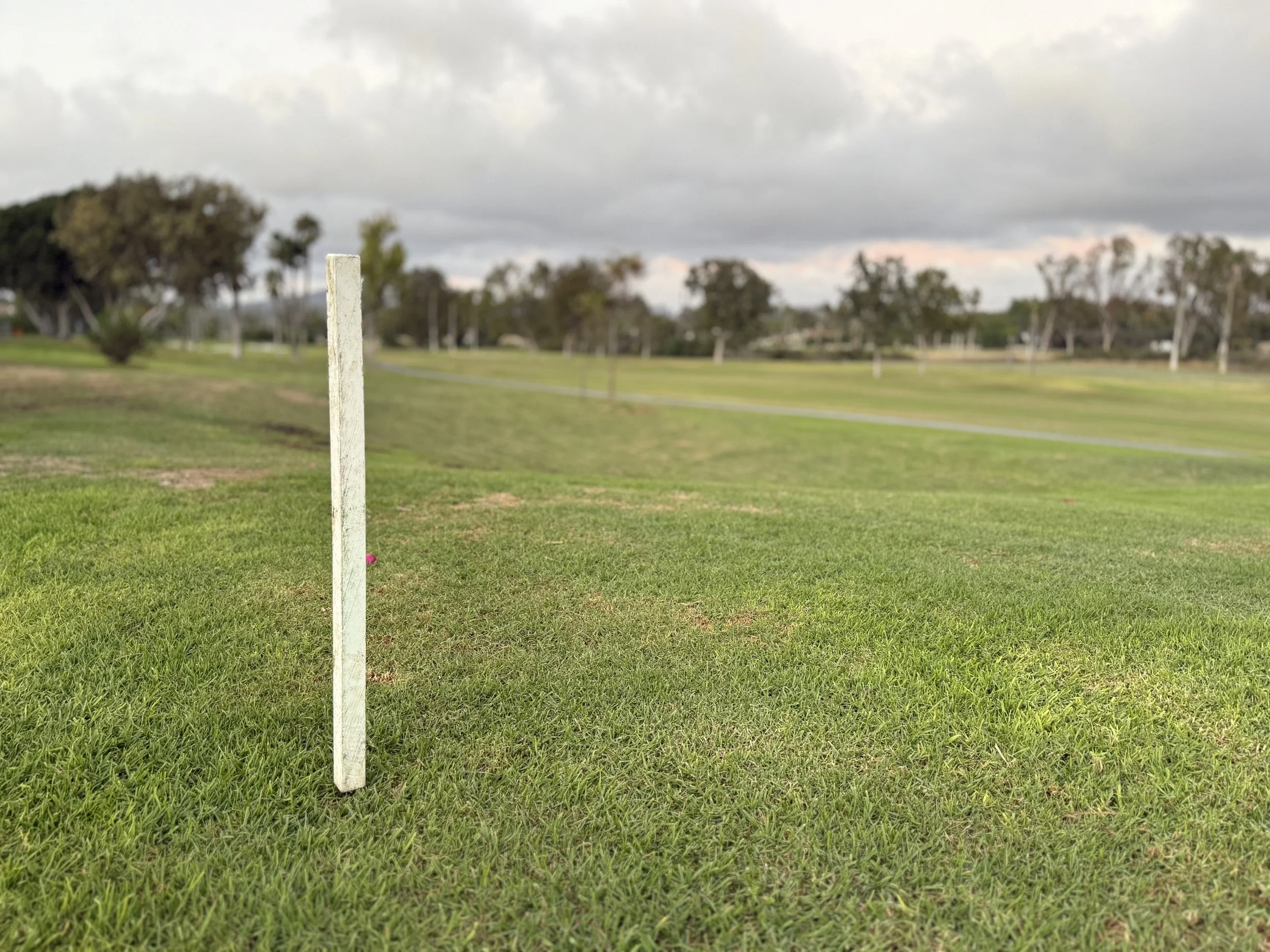Facing the White Stakes
Over the past year, I’ve been spending a lot more time learning the game of golf. At first glance, golf seems simple—hit the ball, get it in the hole. But the deeper I go, the more I realize just how many rules and nuances the game hides.
I grew up playing here and there and would call myself a very average golfer. Most of the time, I’m out with friends on a weekend or sneaking in a quick nine after work. In those rounds, the score rarely matters and the rules even less. A ball in the woods? Drop another. Someone’s backyard? That’s breakfast ball number three. That was golf for me—until recently.
Over the past year, I’ve developed a new appreciation for the sport—studying my swing mechanics, learning what a proper motion looks like, and, most importantly, understanding the actual rules.
Last week I was playing a quick afternoon nine at Lakeview with my father-in-law Mark and one of my best friends Nick. We teed off on the Mountain Course, and I opened with a par on hole one—something that’s become a little more common lately and always gets me excited for what’s ahead. That excitement, however, didn’t last long.
On hole two, I pulled my drive hard left. Luckily, there was plenty of space between the fairway and the houses, and I found my ball resting in the grass of someone’s backyard. I hopped out of the cart, ready to knock it back into play, when Mark pointed out the obvious: the ball was sitting just beyond a white stake—out of bounds.
View to the fairway…
In the past, I would’ve hit it anyway and moved on without a second thought. But Mark walked me through the actual rule, and that’s when my new nemesis was born: the dreaded white stakes.
Here’s the deal. When your ball goes out of bounds, you’ve got two options:
Option A: Go back to where you hit your last shot (in my case, the tee box) and replay it.
Option B: Estimate where the ball crossed out of bounds, then drop within two club lengths of that spot, no closer to the hole, on the edge of the fairway.
Either way, you’re tagged with a two-stroke penalty. In my situation, that meant I wasn’t hitting three, like I thought—I was hitting four. (Some courses allow this drop option as a local rule to keep things moving.)
For most amateurs, Option B is the better choice since it keeps the round moving. But it still stings. In that moment, standing 200+ yards from the pin and already lying four, I felt the rule’s weight.
As frustrating as it was, I walked away with a deeper respect for the game. Golf isn’t just about the swing or the score—it’s about playing it the right way. And with every round lately, I’ve been picking up something new. Sure, the “extra” breakfast balls I’ve taken in the past made my score look a lot prettier than it really was, but that’s between us.
For now, the white stakes and I have an ongoing rivalry—and maybe that’s exactly what I needed. A reminder that sometimes, playing it right matters more than playing it easy.


